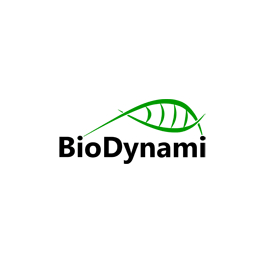 View full size
View full size
- Analiza kwasów nukleinowych
- Analiza białek
- Odczynniki biochemiczne
- Enzymy
- Edytowanie genów
- Klonowanie
- Diagnostyka kliniczna
- Human Identification STR kits
- Sprzęt laboratoryjny
- Oprogramowanie
- A&A Biotechnology
- AdvancedSeq
- BioDynami
- Plant Cell Technology
Aktualności
-
XXXV. Izakovičov memoriál 2025
We are pleased to announce our participation in the prestigious XXXV. Izakovič Memorial 2025, which will take place on October 8–10, 2025 at the Grandhotel Praha, Tatranská Lomnica. The Izakovič Memo...
Czytaj więcej -
1st Czechoslovak Congress of Medical Genetics 2025
In the spring, we will participate in the 1st Czechoslovak Congress of Medical Genetics, which will take place from April 2–4, 2025, at the Cultural and Congress Center Elektra in the spa town of Luha...
Czytaj więcej -
RANK 2025
Visit us at the 19th edition of the RANK 2025 conference, which will take place on March 19th and 20th at the Zlatá Štika Hotel in Pardubice. The conference is organized by the Czech Society of Clinic...
Czytaj więcej
 View full size
View full size
Description:
RNase A is a ribonuclease (endonuclease) derived from bovine pancreas that selectively cleaves phosphodiester bonds in RNA at the 3′ end of pyrimidine residues (cytosine and uracil). The enzyme consists of 124 amino acids (molecular weight 13.7 kDa) and has an optimal pH of 7.0–8.0.
Cleavage specificity depends on salt concentration:
At low NaCl concentrations (<0.1 M), RNase A cleaves both single-stranded and double-stranded RNA as well as RNA/DNA hybrids.
At higher NaCl concentrations (>0.3 M), it cleaves only single-stranded RNA.
The enzyme is highly stable and resistant to denaturation or degradation. It can be inhibited by specific RNase inhibitors or certain chemicals (e.g., DEPC, GITC, SDS).
Due to its targeted cleavage, RNase A generates predictable RNA fragments, as shown in the image below, allowing efficient RNA removal or analysis of RNA structure in biological samples.

Specifications:
- Concentration: 10 mg/ml
- Source: Bovine pancreas
- Molecular weight: 13.7 kDa
- Shipping: Room temperature; store at -20 °C upon receipt
- Storage: -20 °C, stable for up to 12 months
- Storage buffer: 50 mM Tris-HCl (pH 7.5), 50% glycerol
- Optimal pH: 7.0–8.0
- Optimal temperature: 37 °C
- Activity: ≥ 50 Kunitz units/mg
- DNase contamination: Not detected
- Protease contamination: Not detected
Applications:
-
RNA removal during genomic and plasmid DNA isolation
-
RNA elimination from proteins during purification
-
Degradation of unwanted RNA in gene expression analysis
-
Ribonuclease (RNase) assays and applications
Inhibition and inactivation:
Inhibitors include RNase inhibitors, guanidinium thiocyanate (GITC), diethyl pyrocarbonate (DEPC), sodium dodecyl sulfate (SDS), vanadyl ribonucleoside complex (VRC), 5′-diphosphoadenosine-3′-phosphate (ppA-3′-p), 5′-diphosphoadenosine-2′-phosphate (ppA-2′-p), and heavy metals. RNase A can be inactivated by phenol/chloroform extraction.
Product sizes:
-
1 ml (Cat. No. 40106S)
-
5 ml (Cat. No. 40106L)


